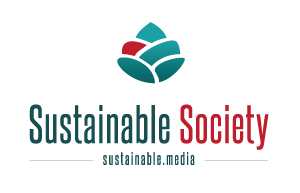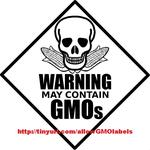GMO Labeling Movie
1. How did the project start?
Seven years ago, my writing partner and wife, Zoe Lister-Jones and I, stumbled onto the subject of Genetically Modified Organisms (GMOs). It was an engrossing topic, vast in scope, yet undeniably personal. We began the process of trying to understand the true nature of GMOs ourselves; their ramifications on our agriculture, our environment, and potentially our health. From farmers battling BioTech Corporations, to everyday Americans eating new and novel foods unknowingly, we realized there was a deeply interesting and complex web of intriguing subject matter just waiting to be explored in a narrative film.
Harkening back to some of the great political thrillers of the 1970s, we wanted to revisit a time when filmmakers weren’t afraid to blend real world politics with story structure and character development. Our biggest objective was to make an entertaining film; but we also saw an opportunity to raise questions around a subject that was impacting us all, but that too few were discussing.
The statistics were undeniable: we learned that over 60 countries around the world label GMOs but the US does not. Even more disconcerting was how pervasive they were in our food supply. Over 90% of corn and soy in the US is genetically modified. GMOs are found in 80% of processed food in this country. And yet we as consumers are not given a choice in whether we consume them because they are not labeled.
Rather than the often faceless debate that surrounds the topic of GMOs, we wanted to create a story that explored how real people confront these issues, in a format that could reach a broader audience.
2. Could you share with us a bit about your film background and what inspired you to become a filmmaker?
As a filmmaker, I always gravitate towards the nuances and complexities of relationships. I think this film is similar to my previous work in that it focuses on the humanity of people, regardless of the context. I also have always been interested in ideological debate, whether it’s personal or political, or the intersection of the two.
While this story is a shift tonally from my last two narrative films, my first documentary, Sex Positive, followed a gay S&M sex worker named Richard Berkowitz who promoted safe sex at the height of the AIDS epidemic. Richard was a figure who had made such an impact on the world of safe sex and had been given very little recognition. So I think from my start as a filmmaker, and what inspired me down this path, was my interest in shedding light on interesting and untold stories. “Breaking Upwards” was an exploration of non-monogamy, which we hadn’t felt we had seen explored thoroughly in the current cinematic landscape. And my last film, “Lola Versus,” showcased a single woman who in the wake of a break-up with her fiancé goes on a funny yet heartfelt journey to find herself.
This story was particularly compelling to us precisely because of its urgency. As we speak, the fight to label GMOs in this country is at a fever pitch. And the battle is about our food supply, which is paramount. But it’s also about so much more. It is about the preservation of our democracy. 90% of Americans are in favor of mandatory GMO labeling, but their representatives feel more responsibility to corporations than constituents. The stakes couldn’t be higher.
3. Is the plot based on a true story? If yes, which part and how did it end in real life?
The plot of CONSUMED is a fictional representation of the food industrial complex in America. Each storyline was inspired by an amalgamation of true stories we learned about through reading books, articles and taking with real people entrenched in this world. Most of what you see on screen is happening in real life to some degree or another.
4. What is your personal opinion on GMOs?
This is a subject that is incredibly complex, and even more divisive. Our research for this film led us to a number of interesting points of discussion. Here is some of what we learned: In the 1980s, for the first time in history, living organisms were able to be patent- ed by corporations.
1 Farms were being inadvertently contaminated with Geneti-cally Modified seeds, causing irreversible effects on the environment including new super bugs and super weeds.
2 Hundreds of farmers all over the country were becoming embroiled in lawsuits with biotech corporations for saving and re- planting seeds, a practice that has sustained agricultural traditions for centuries. And these same farmers were being consistently investigated and bullied to determine if they were violating GM patent infringement laws.
3 We also learned that none of these new Genetically Modified seeds had under-gone any long term safety testing by the FDA on animals or humans.
4 And that, although over 60 countries around the world label GMOs, and in some cases even ban them, the United States does not.
5 The safety of GMOs is one of the most contested topics to date. While GMO pro-ponents claim that GMOs are scientifically proven to be safe, the fact is, the sci-entific community is divided.
6 As we learned more and more, what we began to find particularly disconcerting, however, was the constant depiction by numerous respected writers and thinkers, that those who question GMOs are somehow “anti-science.” That their concerns are not fact based. In devoting much of the past seven years to GMO research, we have learned that that characterization simply isn’t true. In fact, some of the most respected scientific bodies in the world including Codex Alimentarius (jointly run by the
World Health Organization and the Food And Agricultural organization of the United Nations)
7 The American Medical Association, The British Medical Associ-ation 8, and the American Public Health Association, have stated that, through pre-market safety assessments, more research needs to be done on GMOs before we can truthfully determine their safety.
9 Not surprisingly, since most GMOs are the creation of Chemical companies, GMO crops are dependent on chemical inputs. According to a recent study pub-lished in Environmental Sciences Europe, GMO herbicide-tolerant crops “have led to a 527 million pound increase in herbicide use in the US between 1996 and 2011.” 10 And the World Health Organization recently concluded that Glyphosate, the main ingredient in the most used herbicide on GMOs, is “probably carcino-genic to humans.” We are now finding Glyphosate in 60-100% of the rain water in the Mid-West.
11 With widespread herbicide use, has come the emergence of superweeds, which have grown resistant to Glyphosate. This has led to Biotech Corporations devel-oping even more toxic herbicides, including 2,4-D, one of the main components of Agent Orange.
12 What’s more, over 3,200 elementary schools are within 1,000 feet of GMO corn or soybean fields, which leads one to wonder what the effects of these toxic chemicals could be on children.
13 That being said, no matter what side of the argument you are on, pro-GMO or anti-GMO, there is still to this day no scientific proof they are safe or un-safe for human consumption. On the pro-GMO side, they will tell you there is a definitive scientific consensus among the various regulatory agencies that GMO’s have been proven safe to be put on the commercial market. The fact is, the anti-GMO movement can not claim that there are health risks to GMOs, as much as GMO proponents can not claim that there aren’t. There simply has not been sufficient research. Rather than rebuking scientific progress, what the leaders of the anti-GMO movement are demanding is more research in the name of science.
One of the most interesting aspects of the safety debate is a regulatory principle adhered to by the FDA called “Substantial Equivalence.” In its simplest terms, what this means is if a GMO crop contains comparable amounts of a few basic components, such as proteins, fats, and carbohydrates, as its non-GMO coun-terpart, then the GMO crop is “substantially equivalent” to the non-GMO. Under this paradigm, GMOs and non-GMOs are the same; therefore, no compulsory safety testing is required by the regulatory agencies.
14 This made us take pause. We couldn’t help but wonder, if conventional food and genetically modified food were inherently the same thing according to the FDA, then how could you conclude that genetically modified seeds were different enough to be patented? And why wasn’t this contradiction being investigated in a larger discourse?
Of course there are many arguments made in support of GMO’s, as well. GMO proponents claim that GMO’s are saving the world by adding vital nutrients into their foods for impoverished populations in third world countries; that they are making new drought resistant crops to withstand varying weather conditions; and that their seed technology is improving farmer yields. All noble pursuits in the name of science, and all of which sound good to us, too. In theory. But, unfortu-nately, we just don’t think we’re there yet.
A byproduct of becoming consumed by this subject, was drawing our own con-clusions, irrespective of the film itself. In the end, our desire as filmmakers was to try to entertain audiences while still raising thought provoking questions in the minds of the viewer, and ultimately allow them to form their own opinion.
1http://www.thehastingscenter.org/publications/briefingbook/detail.aspx?id=2174
2 http://www.reuters.com/article/2011/09/19/us-monsanto-superweeds-idUS-TRE78I4BA20110919
3 http://www.centerforfoodsafety.org/reports/1770/seed-giants-vs-us-farmers#
4 http://www.ensser.org/increasing-public-information/no-scientific-consensus-on-gmo-safety/
5 http://www.centerforfoodsafety.org/issues/976/ge-food-labeling/international-labeling-laws#
6 http://www.ensser.org/increasing-public-information/no-scientific-consensus-on-gmo-safety/
7 http://www.codexalimentarius.org/standards/list-standards/en/?no_cache=1
8http://web.archive.org/web/20050513225412/http://www.bma.org.uk/ap.nsf/Content/GMFoods/ $file/GM.pdf
9 http://apha.org/policies-and-advocacy/public-health-policy-statements/policy-database/ 2014/07/28/13/18/support-of-the-labeling-of-genetically-modified-foods
10 http://www.enveurope.com/content/24/1/24
11 http://www.ncbi.nlm.nih.gov/pubmed/21128261
12 http://www.huffingtonpost.com/2014/10/15/epa-enlist-duo-weed-killer_n_5990482.html
13 http://www.ewg.org/agmag/2014/06/thousands-schools-would-be-close-toxic-spray-zones
14 http://fas.org/biosecurity/education/dualuse-agriculture/2.-agricultural-biotechnology/us-regu- lation-of-genetically-engineered-crops.html
5. How was the process, from script creation to financing and distributing, of a film with this subject matter?
The process was long and arduous. The biggest challenge was tying to synthesize all of the information out there into a cohesive narrative that people could relate to on a personal level.
We made the film entirely independently through our own production company, Mister Lister Films. We found the financing privately through friends and family. We did not have a studio or big producer behind us, only ourselves to trust. We were fortunate enough to assemble an incredible cast of actors, all of whom identified with the story. Shooting in rural Illinois landed us in the belly of the beast: amongst American farmers grappling with the very issues upon which our film so heavily draws. After years of research, coming face to face with those on the frontlines of this battle set an incredible stage for our production.
When it came time to shooting, my cinematographer and I strived for the film to look as polished, beautiful, and authentic as possible to accentuate the true beauty of rural America. In the end, I hope people will be affected by both the imagery and the impact of the story. I am excited for this film to inhabit the space in which entertainment and public discourse collide.
In terms of distribution, we have partnered with two different companies, Gathr Films for Theatrical on Demand and Mar Vista for digital distribution.
What Are We Eating? – LabelGMOs
6. How long did it take to realize the movie?
We began around 7 years ago or so. There were many stops and starts. But we stayed the course and followed our hearts.
7. In your opinion, what is the best model approach to food agriculture instead of GMOs?
Regenerative agriculture, which focuses on sustainable and environmentally friendly methods of farming, and promotes Organic practices to help enrich soil and promote biodiversity. We need to dramatically cut back on the amount of toxic chemicals being sprayed on our crops, in addition to overhauling the entire Big-AG system so government subsidies are not flowing to factory farms and instead are being given to small, organic farmers. As the Organic Consumers Association states, “Regeneration holds the potential not only to restore forests and grasslands, recharge aquifers, restore and normalize rainfall, but also to address and eliminate rural malnutrition, poverty, unemployment and hunger.” Read more here: https://www.organicconsumers.org/essays/regeneration-global-transformation-catastrophic-times
8. Have you worked in other projects with the same or similar subject matter?
No, I have not. This is my first foray into this world.
9. What is the message you would like to get across in regards to GMOs?
I want to entertain audiences, first and foremost. Consumed is a dramatic thriller. The goal is to take people on a fun and fascinating journey, but at the same time, spark a larger conversation about the food we are eating in this country. A film that can be both both exciting and informative at the same time.
Why We Oppose GMO Labeling: Science and the Law
10. What would be your message to the film community in regards to addressing important subjects such as this one?
I hope the industry works harder to address important subjects like GMOs in major commercial film, so audiences can have more meaningful dialogue around real issues. We need filmmakers and studios alike to feel the safety to take more risks and be able to hold a figurative mirror up to society, so we can all truly reflect on how we are impacting our world for better and for worse. Art has always been a medium in which this exchange of ideas is possible, I just hope in this era of Super-hero movies and over-commercialization we don’t lose sight of the significant and taboo topics that still need to be addressed.
To see CONSUMED, you can rent or buy the film directly though the filmmaker’s website: consumedthemovie.com. That method helps support the film the most. You can also get the film on iTunes, Amazon, Google Play, Vimeo, Google Play, and select TV VOD Platforms. Follow @consumedmovie on Twitter and Instagram.
Original content and source: Sustainable.Media











